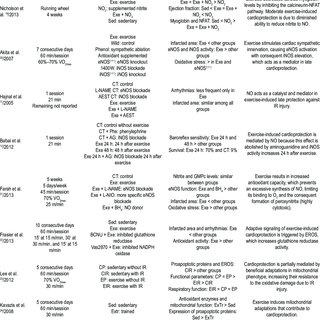Etiology
Restrictive myocardial damage can be idiopathic (for no apparent reason) or secondary (resulting from the negative influence of certain factors).
Causes of restrictive heart disease
| Myocardial | Endomyocardial | |
|---|---|---|
| Non-infiltrative type | Infiltrative type | |
| Idiopathic, hereditary, diabetic, scleroderma lesions | Gaucher disease, fatty infiltration, hemochromatosis, sarcoidosis | Endomyocardiosclerosis, carcinoma metastases, fibrous endomyocarditis (caused by drugs such as busulfan, ergotamine, serotonin), radiation, hypereosinophilic syndrome |
A restrictively affected heart is characterized by:
- thickening of the endocardium (inner layer of the walls);
- fibrosis of the upper ventricles, posterior cusp of the mitral valve, chords and tops of the papillary muscles;
- the formation of parietal blood clots.
Classification of idiopathic cardiomyopathy of restrictive genesis:
- primary;
- endocardial fibroelastosis (children from zero to two years old);
- hypereosinophilia syndrome:
- Leffler's endocarditis;
- endomyocardial fibrosis.
Clinical manifestations
The clinical picture is caused by increased pressure in the atria during systole (in particular, in the left one) and decreased cardiac output.
Pathogenesis: since the walls of the ventricle are rigid (poorly stretched under the blood stream), the atria have to overcome their resistance, pushing the blood out with effort during systole. This leads to their dilatation and excessive blood filling of the liver and blood vessels of the lungs.
Common symptoms in the early stages:
- deterioration of health during physical activity (the child may not complain, but runs less);
- shortness of breath during rest;
- excessive fatigue;
- weakness.
Manifestations of lesions of different localization
| Characteristics | Place of development of the pathological process | |
|---|---|---|
| Left ventricle (LV) | Right ventricle (RV) | |
| Clinic | Shortness of breath, cough, development of cardiac asthma | Severe edema (in the evening appear on the legs, cold to the touch), ascites |
| Morphological changes in the heart | Expansion of the left atrium | Increase due to hypertrophy and dilatation of the right sections |
| Auscultation | Apex systolic murmur | Three-membered gallop rhythm, systolic murmur |
| Organ changes | Congestion of blood in the lungs | Enlargement of the liver, possible pain on palpation |
| Vascular lesion | Hypertension of the pulmonary circulation | Jugular venous swelling, increased central venous pressure |
With the localization of myocardial damage in both ventricles, total heart failure develops.
With this type of cardiomyopathy, the presence of:
- pericarditis (accumulation of fluid in the pericardial sac);
- pleurisy (inflammatory exudate is located between the sheets of the pleura covering the lungs, its presence is manifested by pain in the chest);
- arrhythmias (atrial fibrillation (due to their dilatation), bundle branch block);
- thromboembolic complications.
Diagnostics
The electrocardiogram reveals signs of hypertrophy of the affected parts of the heart, rhythm disturbances and cicatricial changes in the heart muscle. On a chest X-ray, you can see enlarged atria, calcifications, signs of increased blood flow to the pulmonary circulation (diffuse darkening and increased pulmonary pattern).
However, echocardiography (EchoCG) is considered the main method for verifying restrictive cardiomyopathy. Sonographic signs of this type of myocardial pathology:
- adequate pumping function of the ventricles (especially in the initial stages);
- enlargement of the atria;
- thickening of the endocardial layer;
- absence of hypertrophy of the heart muscle;
- insufficiency of the mitral valve (sagging of the posterior leaflet in systole);
- decrease in the length of isovolumic relaxation;
- violation of blood flow in the pulmonary vein.
The diagnosis of idiopathic cardiomyopathy can be established only after excluding all possible causes of the development of pathology.
Treatment
With secondary cardiomyopathy caused by metabolic disorders, etiotropic therapy (with amyloidosis, hemochromatosis) can be used. In other cases, symptomatic treatment is the main recommendation. It includes:
- glucocorticosteroids (reduce inflammation and proliferation of foreign tissues in the myocardium);
- diuretics (relieve symptoms of stagnation);
- ACE inhibitors (to improve left ventricular function);
- β-blockers (prevention of sudden cardiac death);
- cardiac glycosides (increase the duration of the period of filling the ventricles);
- anticoagulants (prevention of thromboembolic complications).
The prognosis is unfavorable, in the first 5 years the survival rate is 30%. Poor prognostic signs: decrease in QRS amplitude, increase in myocardial thickness.
Conclusions
Restrictive cardiomyopathy can be idiopathic in nature or occur due to the negative influence of external factors. There is a thickening of the myocardium and thickening of the endocardium. This leads to pathologies of the valve apparatus and disturbances in the conducting system of the heart.
The restrictive type of lesion is manifested by symptoms of heart failure in the left ventricular or right ventricular type. Development of total myocardial dysfunction is possible.
Echocardiography is the gold standard for diagnosis. Treatment is mostly symptomatic.



